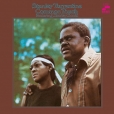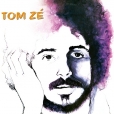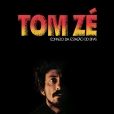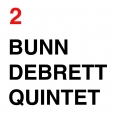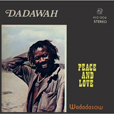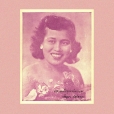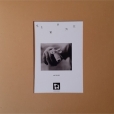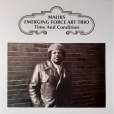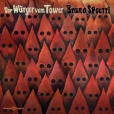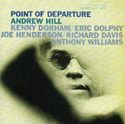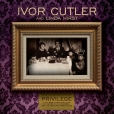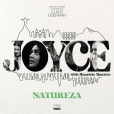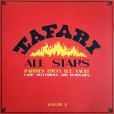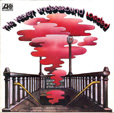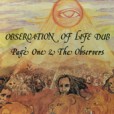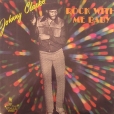Your basket is empty

‘Heady, raw, druggy songs of love, dread, hardship, and yearning, recorded in Athens between 1932 and 1936, when Markos was already a master of the bouzouki. His forceful, clean playing compliments his hoarse voice and his stunning rhythmic sensibility, the result of his years as a champion zebekiko dancer. Tracks build and spiral outward, his open-note drones and melodic lines drawing calls of ecstasy and encouragement from his fellow musicians. These recordings mark the height of rebetika, the brief period between the music’s emergence on the recording scene in the early 1930s and government censorship of all lyrics starting in 1936. During the Axis occupation there was no rebetika recording, and though Markos had some hits in the years after the war, he never again attained this level. These are the dizzying, entrancing, and heaviest works of one of the great artists of the 20th century.’
Dark, hypnotic, tripping nyabinghi from 1974.
Led by Ras Michael over four extended excursions, the music is organic, sublime and expansive, grounation-drums and bass heavy (with no rhythm guitar, rather Willie Lindo brilliantly improvising a kind of dazed, harmolodic blues).
Lloyd Charmers and Federal engineer George Raymond stayed up all night after the session, to mix the recording, opening out the enraptured mood into echoing space, adding sparse, startling effects to the keyboards.
At no cost to its deep spirituality, this is the closest reggae comes to psychedelia.
Beseeching, heartbreaking, balladeering Thai popular song, with a new, post-war urban polish and sensibility, and measured display of western styles like jazz, tango, and rumba. Lovely stuff.
The great bassist’s first LP as leader, released in 1978, just after the demise of the Revolutionary Ensemble.
Fact magazine reckons it’s one of ‘twenty essential records from the 70s underground’: ‘a beautiful set, with James Newton’s flute giving the quartet performances a breathy lilt, while the interaction between Sirone on bass and Muneer Bernard Fennell (who also appears on Abdullah’s wonderful Life Force from 1979) on cello is lovely, particularly when Sirone is playing arco — parts of Circumstances feel like they’re levitating on lambent strings. Famoudou Don Moye (of The Art Ensemble Of Chicago) is a sympathetic, apposite percussionist too. Yet perhaps the most potent moment on the album comes when Sirone is playing solo, singing out from and stretching the parameters of the instrument, running rivulets of melody down the instrument’s spine on Breath Of Life. The closing Libido ends things on a graceful, melancholic note, the strings and flute harmonising across gentle phrases.’
Painstakingly reissued, in a die-cut craft-card sleeve, with a printed inner, and two postcards.
Bluesy, free, spiritual jazz from St Louis. Recorded in 1982; still freshly rugged and intimately engaging.
Right away you can hear saxophonist Maurice Malik King’s indebtedness to Albert Ayler, with whom he studied at the turn of the sixties in NY, before returning to the Midwest. Two more long-term activists of the post-bop underground — both embedded in New Mexico — Qaiyim Shabazz plays congas, and the outstanding bass-playing is by Zimbabwe Nkenya, who has collaborated with Ku-umba Frank Lacy, Julius Hemphill, William Parker, and a host of others.
A cor-blimey line-up, and a masterpiece, recorded on the first day of spring in 1964. Dorham, Dolphy, Joe Henderson, Richard Davis, Tony Williams.
‘Classic Vinyl Series.’
The first time out for this buried treasure recorded in 1977 at Columbia Studios in New York with Claus Ogerman.
Featuring fellow Brazilians Mauricio Maestro, Nana Vasconcelos and Tutty Moreno, and in-demand statesiders including Michael Brecker, Joe Farrell and Buster Williams, it kicks off with a sensational eleven-minute version of her anthemic Feminina. Check out Descompassadamente, too. Lovely stuff.
Gritty, diggers’ selection of sides originally out on Wackies, Aires, Earth and co; plus some tough dubplates featuring Leroy Sibbles and Stranger Cole.
Sibbles chips in his own Guiding Star rhythm from Studio One days, re-worked at Bullwackies; and reputedly that’s him undercover on the opener with Little Roy, ripping off Glen Brown’s Wedden Skank.
Tough dub counterpart to The Heptones’ Better Days set.
‘A mesmerizing blend of ambient, experimental, and electronic sounds. Each composition is an invitation to explore altered states of consciousness, with the music serving as a portal to uncharted territories of the mind. The album offers a glimpse into an inner world, where sound, inspiration, and introspection create a deeply moving and spiritually enriching musical journey.’
